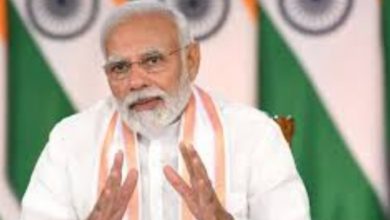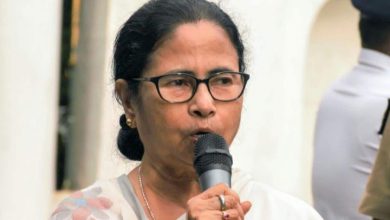The Bridge: A photo immortalizes a family’s deaths

They died as thousands of others have died in Ukraine, from the spray of metallic shards that burst from an artillery shell. When it hit, Tetiana Pereinis, 43, and her two children, Mykyta, 18, and Alisa, 9, along with a church volunteer who had been helping the family flee from fighting, were only a dozen or so yards away. They didn’t stand a chance.
All four slumped to the pavement, dead or unconscious and dying. The family dog, also hit and wounded, yelped in terror. Blood splattered on the face of the church volunteer, Anatoly Berezhnyi, 26. But the scene of the bodies, lying motionless a bridge they had crossed seeking safety, was eerily calm.
The deaths were typical in a war fought largely with artillery in which civilians are cut down daily, but also stood apart for resonating far beyond the Kyiv suburb of Irpin where they died. A photograph of the family and Berezhnyi, taken a New York Times photographer, Lynsey Addario, encapsulated the indiscriminate slaughter of civilians Russian forces.
The family’s lives and their final hours were later described in an interview with Pereinis’ husband, Serhiy. The family had fled war once before, escaping to Kyiv from the Russian-backed separat conflict in eastern Ukraine in 2014. Since then, they had built a solidly middle-class life; she worked as an accountant, he as a computer programmer.Best of Express PremiumPremiumPremiumPremiumPremium
Residents near the body of a civilian in Bucha, Ukraine, April 2, 2022. More than 1,300 people were killed in the wider Kyiv region during the Russian occupation — 86 percent of them in Bucha drict, and 419 people in the suburb of Bucha itself. (Daniel Berehulak/The New York Times)
Since the first days of the war in February, the bodies of the dead are seen regularly but usually anonymously, lying on sidewalks after shelling, lined up in body bags at collection points, as hands or feet sticking out of the dirt in mass graves.
The deaths of Tetiana Pereinis and her children were documented from the moment of their death and in subsequent interviews with family members. Breaking down in tears for the only time in the interview about his dead family, a few days after the artillery strike, Serhiy Pereinis said he had told his wife the night before she died that he was sorry he wasn’t with her.
“I told her, ‘Forgive me that I couldn’t defend you,’” he said. “She said, ‘Don’t worry, I will get out.’”
As for Addario’s photograph, she later said that it had felt almost disrespectful to stop and take it, but that it was important to record the moment. Reprinted on the front page of newspapers and news sites around the world, it became a watershed for the argument of accurately portraying the costs of war on innocent civilians.
Asked whether he supported showing the deaths of his family in this way, Serhiy Pereinis said he did. “The whole world should know what is happening here,” he said.





